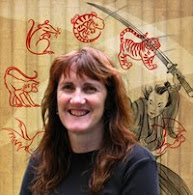Arncliffe Public School: 4. Setting the Scene
When we build the setting for a story we are answering the questions  when and where – the time, the place and the circumstances. The setting is the background for the events that take place but this does not mean it is unimportant.
when and where – the time, the place and the circumstances. The setting is the background for the events that take place but this does not mean it is unimportant.
In fantasy stories the writers has to build the world. In historical fiction the writer has to research the time to make sure the facts in the story are correct. In real life stories the setting may be a place familiar to the writer. Even his/her own house!
The setting can impact upon the characters. It can limit what they can do. Girls could not join the army of ancient Rome. This might suggest a story where a girl pretends she is a boy so she can join the Roman legion and travel all over the known world. A boy cannot climb a large mountain in a day. This might suggest super hero powers so he can fly to the top.
Setting helps the reader visualise the story. The key to describing setting is the five senses – see, touch, hear, taste and smell. It is easy to describe what the character can see but a better description will also include some of the other five senses.
What can you see? (Don’t forget to use adjectives)
What can you hear? (You might like to use onomatopoeia – a sound word like ‘woof’ or alliteration where words begin with the same sound – scritch-scritch-scratch
What can you smell? (You could use a simile, a description that says something is like something else, for example ‘it smells like a cake baking’
What can you feel? What can you taste?
Write a four sentence description of using at least three of the senses above.
What could you add to your description to tell the reader when? When could be the time of day, the time of year or the date? You could be direct. “It was a hot summer night” Or you could give a piece of information that provides the reader with clues. If you say “I heard an owl hoot” the reader knows it is night time.
Here is an example from one of my books Samurai Kids: Fire Lizard
Dawn peeks over the edge of the mountain. Like leftover noodles, the village curls sleepy in the base of its soup bowl valley, while the first rays of sun snoop into its hidden huts.
In this short paragraph we have see (physical scene), feel (sense of secrecy) and the time (early morning). Because this scene is in Korea, I have used images from Korean meals ‘like leftover noodles’ and ‘soup bowl valley’. While these images don’t tell us the place this give us a sense of geography –that this is probably somewhere in Asia.
And just for fun - you can make a Skulduggery Plesant avatar here or watch a You Tube for the coming film:












Currently have 0 comments: